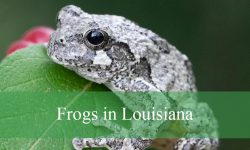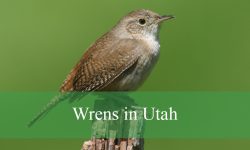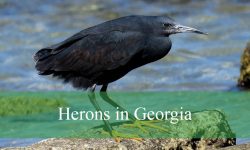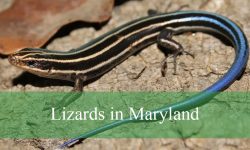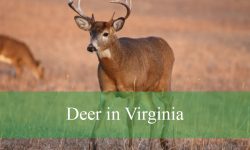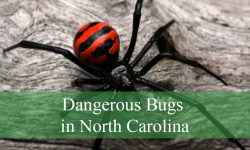The forests, wetlands, and rivers of Maine are home to a variety of biting flies that often trouble visitors and residents. From riverside black flies to marsh-dwelling sand flies, these insects have unique habits and habitats.
Understanding which species are present, how they behave, and where they are most active can help residents and visitors protect themselves. Each fly has distinct characteristics, and proper identification is key to managing exposure.
This guide explores ten common biting flies in Maine, providing identification tips, behavior insights, and practical advice for avoiding bites. Whether hiking, camping, or tending livestock, knowing these pests is essential for staying safe.
Types of Biting Flies Found in Maine
Black Flies (Simuliidae)
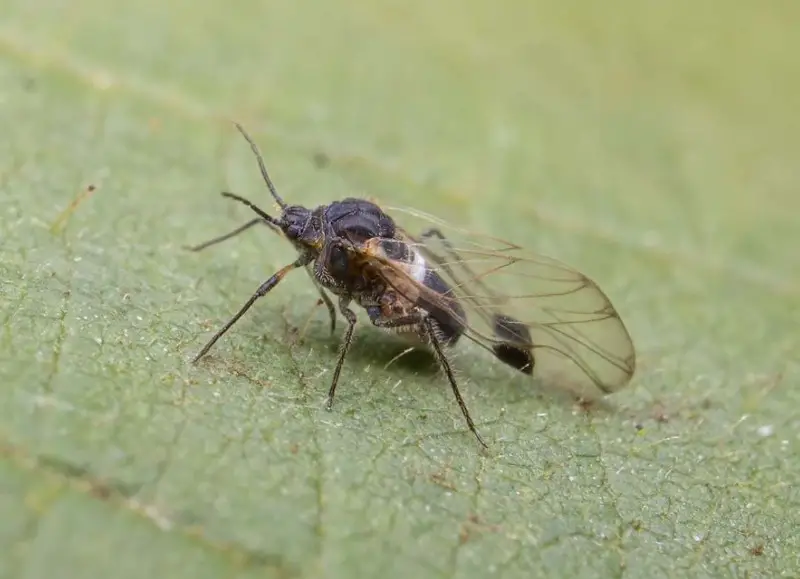
Black flies are small, dark, hump-backed flies, typically measuring 1–5 mm in length. Their dark, compact bodies and short antennae make them easy to identify. Larvae develop exclusively in clean, flowing water such as rivers and streams, which makes riparian areas prime habitats for these insects.
In Maine, black flies emerge in late spring and early summer, often swarming in large numbers. They are most active during daylight hours, especially in the morning and late afternoon when temperatures are moderate. Their swarming behavior can make outdoor activities uncomfortable, particularly hiking, camping, or fishing near streams.
Female black flies require blood meals to reproduce, and their bites are notoriously painful. The bites can cause intense itching, redness, and swelling. In some cases, allergic reactions can occur, leading to hives or fever-like symptoms. Repeated bites over a short period can result in welts and skin irritation that persist for days.
Black flies are particularly challenging to avoid because they are strong fliers relative to their size and can penetrate thin clothing. Personal protection measures, including insect repellents, long sleeves, and head nets, are often necessary in high-density areas.
Despite their nuisance, black flies play an ecological role as pollinators for certain plants and as a food source for birds and aquatic insects. Understanding their life cycle helps in timing outdoor activities to minimize exposure.
Deer Flies (Chrysops spp.)
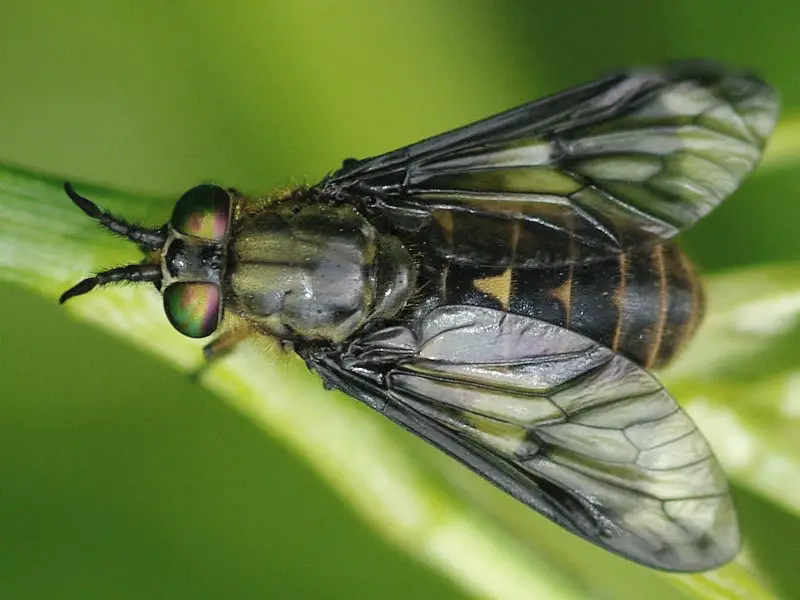
Deer flies are slightly larger than black flies, typically 6–12 mm long, and are recognized by their brightly patterned wings and large, prominent eyes. Their bodies are stout, and females have sharp mouthparts adapted for piercing skin and sucking blood.
These flies are aggressive daytime biters and are particularly active in wooded areas, wetlands, and near water bodies during summer months. Unlike black flies, deer flies can chase moving targets, making them especially bothersome for hikers, hunters, and livestock.
Female deer flies feed on blood to obtain proteins necessary for egg development. Their bites are extremely painful and can leave raised, itchy welts that may persist for several days. While they rarely transmit diseases to humans in Maine, they can carry pathogens affecting livestock.
Deer flies tend to hover and dash quickly, striking repeatedly until they are satisfied. Their biting activity often peaks on warm, sunny days, and they are less active during overcast or rainy weather. Protective clothing, insect repellents, and avoiding peak activity times are effective deterrents.
Ecologically, deer flies serve as prey for birds, frogs, and spiders. Though they are primarily pests, they are an integral part of wetland ecosystems, contributing to food web dynamics.
Horse Flies (Tabanidae)
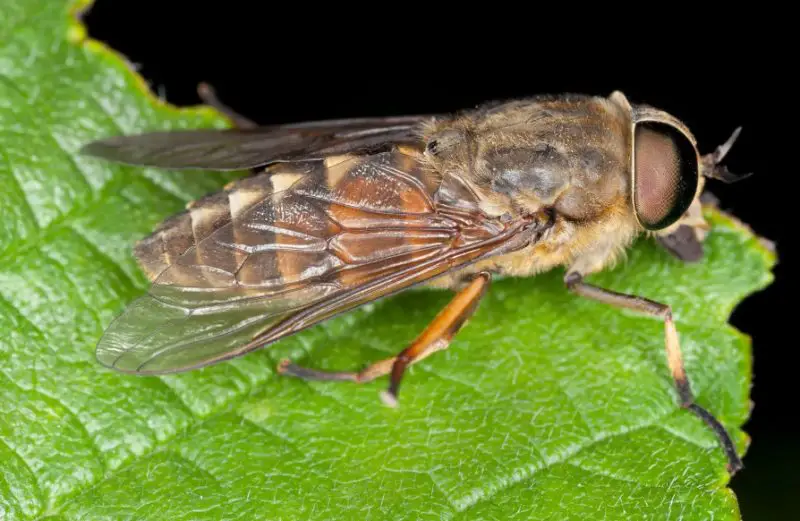
Horse flies are among the largest biting flies in Maine, ranging from 10 to 25 mm in length, with large, colorful eyes that often reflect green or blue hues. Their robust bodies and strong wings allow them to fly long distances in search of hosts.
Female horse flies require blood meals to reproduce, and their bites are known to be extremely painful. They use scissor-like mouthparts to cut the skin, often causing bleeding, swelling, and irritation. Multiple bites in the same area can lead to secondary infections if not treated properly.
Horse flies inhabit marshes, ponds, pastures, and other wetland-adjacent areas where large mammals are present. Their populations peak in summer, particularly in warm, sunny conditions, and they are most active during midday when livestock are grazing.
These flies are difficult to evade because of their speed, persistence, and keen vision. They can fly several miles in search of blood meals, making personal protection essential when in rural or recreational areas. In addition to causing pain, horse flies may stress livestock, reducing grazing efficiency and weight gain.
Despite their reputation as pests, horse flies are important pollinators for some flowering plants. They also serve as prey for birds, dragonflies, and other predatory insects, maintaining ecological balance in their habitats.
Stable Flies (Stomoxys calcitrans)
Stable flies are slightly smaller than horse flies, measuring about 6–8 mm in length, and resemble house flies. However, they have a piercing proboscis that allows them to feed on blood from mammals, making them true biting flies.
These flies are commonly found around livestock facilities, barns, and pastures. They target the legs and lower body of cattle, horses, and occasionally humans, inflicting repeated, painful bites. Their bites often lead to itching, swelling, and in severe cases, secondary infections due to scratching.
Stable flies reproduce in decaying organic matter, including hay, manure, and moist bedding. This breeding habit allows populations to grow rapidly in livestock areas, making them persistent pests throughout the summer months.
Their biting behavior can stress animals, reduce milk production, and slow weight gain in livestock. For humans, bites can be irritating and uncomfortable, especially when working outdoors near farms. Management involves proper sanitation, removing breeding sites, and using fly repellents or traps.
Stable flies play a minor ecological role compared to other biting flies, serving as prey for birds and parasitic wasps. Understanding their life cycle helps in controlling populations in agricultural settings effectively.
Sand Flies (Phlebotominae)
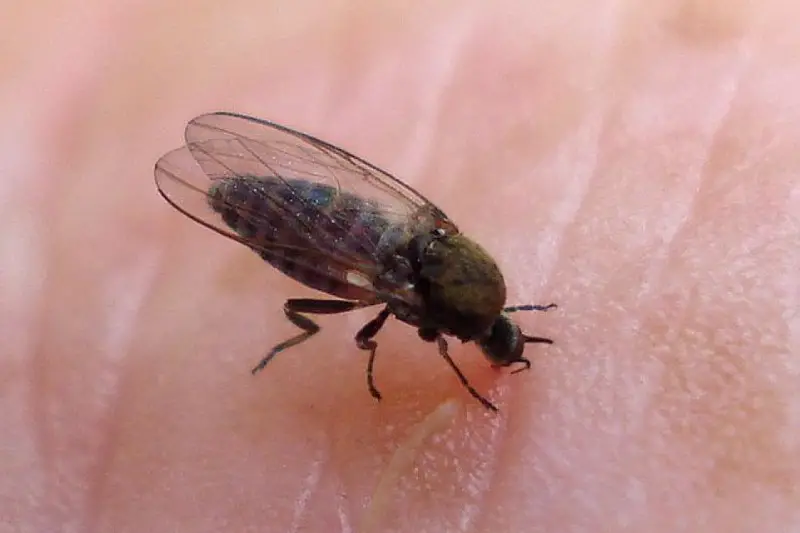
Sand flies are tiny, hairy flies, usually 2–3 mm long, with delicate wings and a humped thorax. They are primarily active during dusk and nighttime, making their bites a common nuisance for campers and outdoor enthusiasts.
Female sand flies feed on blood to reproduce, and their bites can cause intense itching, redness, and sometimes allergic reactions. While human disease transmission in Maine is rare, sand flies can transmit certain pathogens to animals, making them a concern for pets and livestock.
They are commonly found in humid, sandy, or marshy areas, and their populations are concentrated in areas with leaf litter, soil, or decaying vegetation. Moisture and shelter are critical for their breeding and survival.
Due to their small size, sand flies can pass through fine mesh screens and are difficult to detect until bites occur. Using insect repellents, protective clothing, and bed nets can minimize exposure during peak activity hours.
Despite their biting behavior, sand flies are part of the local food web, serving as prey for spiders, small birds, and other insect predators. Their ecological role helps sustain the balance in wetland and forest ecosystems.
Fungus Gnats (Sciaridae)
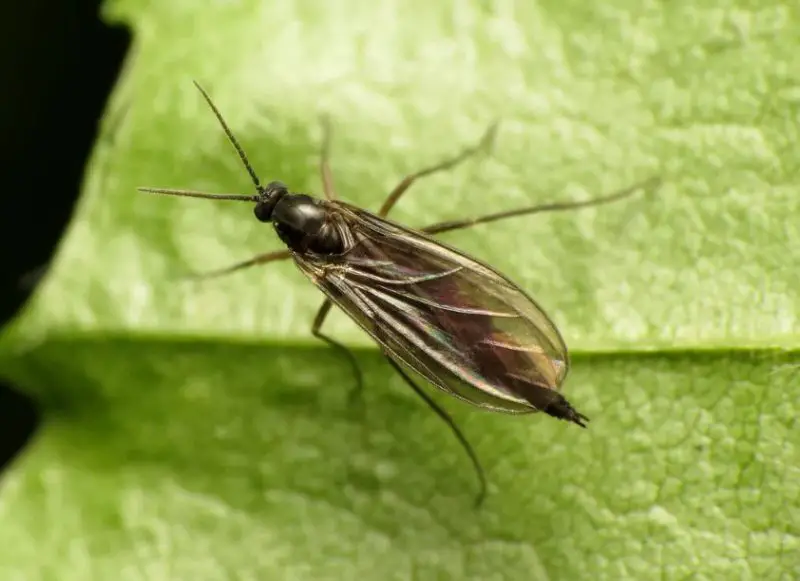
Fungus gnats are very small, delicate flies, usually 2–5 mm long, with long legs and translucent wings. They are most commonly associated with moist soil and decaying plant material, where larvae feed on fungi and organic matter.
Although fungus gnats rarely bite humans, adult flies can be a nuisance indoors, especially around houseplants. Their small size and erratic flight patterns make them difficult to control once populations establish.
Larvae can damage plant roots, particularly in potted plants or greenhouses. Overwatering and poor drainage create ideal conditions for fungus gnat proliferation. Infestations can lead to stunted growth and wilting in sensitive plants.
Fungus gnats are most active during warm, humid conditions and thrive indoors during spring and summer. Reducing soil moisture and using sticky traps are effective methods for managing adult populations.
Ecologically, fungus gnats contribute to decomposition by breaking down organic matter and promoting fungal growth. They also serve as a food source for predatory insects and small arachnids in soil ecosystems.
Face Flies (Musca autumnalis)
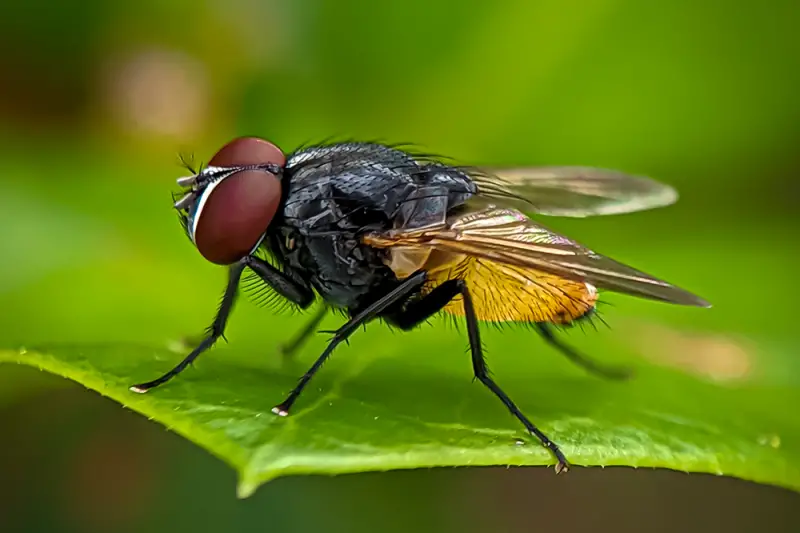
Face flies are medium-sized flies, approximately 6–8 mm in length, with gray bodies and translucent wings. They are closely associated with livestock, feeding primarily on eye and nasal secretions.
While face flies rarely bite humans, they can be a significant nuisance to cattle, horses, and other farm animals. Their feeding behavior can transmit bacterial and viral pathogens among livestock, contributing to conjunctivitis and other infections.
Face flies are most active during warm, sunny days in summer, often congregating on animal faces and around barns or pastures. They are strong fliers and can travel between farms in search of food sources.
Controlling face fly populations involves sanitation, insecticides around livestock areas, and physical barriers like fly masks for animals. These measures reduce both discomfort and disease transmission risk.
Despite being a pest, face flies play a minor ecological role by providing prey for birds and other insectivores. They also interact with other insects in farm ecosystems, influencing population dynamics.
Buffalo Gnats (Simulium spp., other than common black flies)
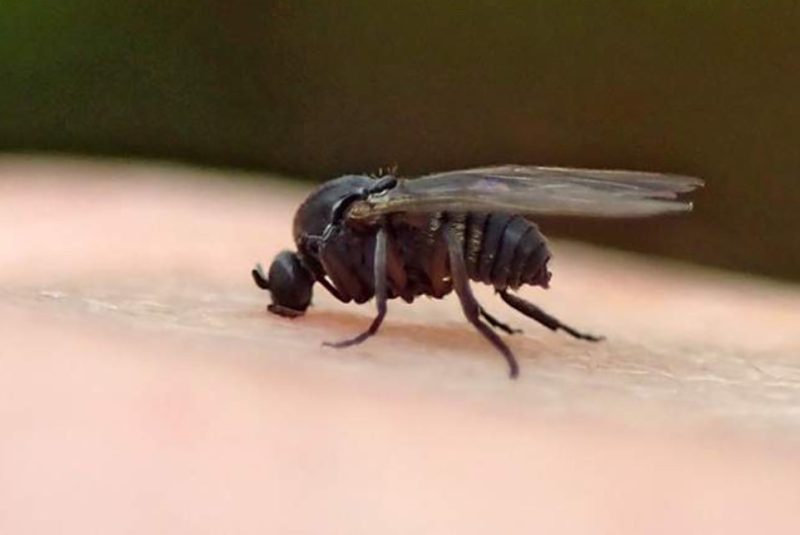
Buffalo gnats are closely related to black flies but slightly larger, ranging from 4–7 mm. They have dark, hump-backed bodies and short antennae, making them similar in appearance to black flies.
These gnats are aggressive daytime biters, often targeting humans and animals near rivers, lakes, and wetlands. Their bites are painful and can cause itching, swelling, and allergic reactions in sensitive individuals.
Buffalo gnats are most prevalent during late spring and early summer. Their swarming behavior can disrupt outdoor activities, especially in areas where cattle or deer congregate.
Female buffalo gnats feed on blood to develop eggs. Repeated bites over short periods can leave raised welts and skin irritation, making personal protection necessary in infested areas.
Ecologically, buffalo gnats serve as pollinators and provide food for fish, birds, and other aquatic predators. Their larvae, which develop in clean running water, contribute to nutrient cycling in freshwater ecosystems.
Biting Midges / “No-See-Ums” (Ceratopogonidae)
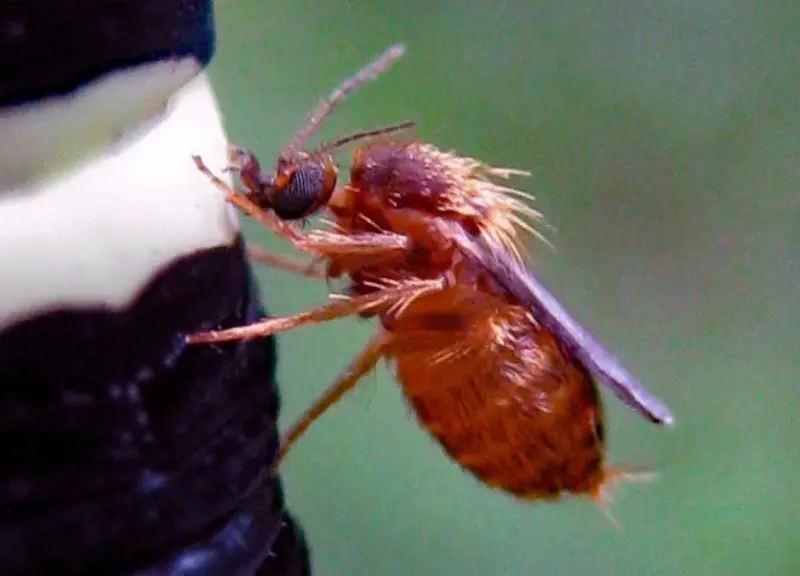
Biting midges, commonly called no-see-ums, are extremely small flies, usually 1–3 mm long, and can pass through standard mesh screens. They are hairy, with narrow wings and a characteristic humped thorax.
Female midges feed on blood, inflicting bites that cause intense itching, redness, and sometimes allergic reactions. They are particularly troublesome around marshes, beaches, and other moist environments.
These flies are most active at dawn, dusk, and nighttime. They can be difficult to detect due to their tiny size, and bites often occur before their presence is noticed.
Biting midges reproduce in wet soil, mud, or decaying vegetation. Their populations can surge rapidly in warm, humid conditions, requiring protective measures such as repellents, long clothing, and fine-mesh nets.
Ecologically, biting midges are important pollinators of some plants, including cacao trees in tropical regions, and serve as prey for spiders, birds, and other predatory insects.
Mosquitoes (Culicidae)
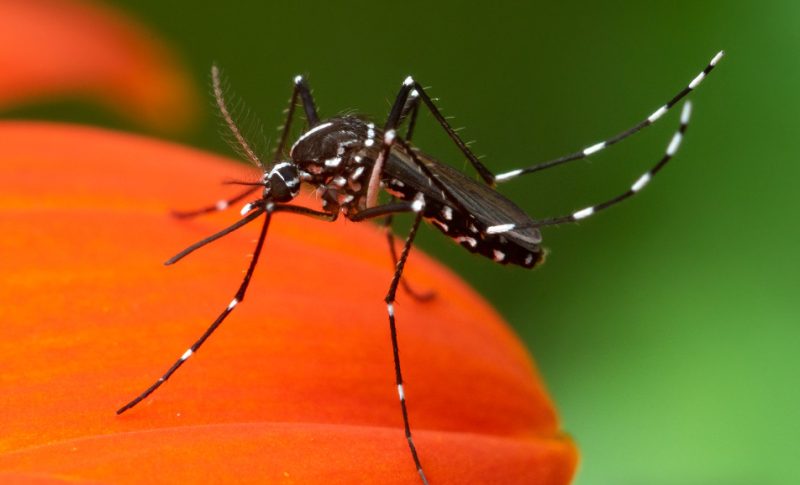
Mosquitoes are medium-sized flies with slender bodies, long legs, and a piercing proboscis used for feeding on blood. Females require blood meals for egg development, making them the primary concern for humans and animals.
In Maine, mosquito species such as Aedes and Culex are most active in late spring through summer, especially in wetlands, ponds, and areas with standing water. Their bites cause itching, swelling, and discomfort.
Some mosquito species can transmit diseases like Eastern Equine Encephalitis (EEEV) and West Nile Virus to humans and animals. While infections are rare, precautions are essential to reduce risk.
Mosquitoes are most active during dawn, dusk, and nighttime, often forming swarms in areas with high humidity. Preventive measures include removing standing water, wearing protective clothing, and applying insect repellents.
Ecologically, mosquitoes serve as a critical food source for fish, birds, bats, and other insects. Their larvae contribute to nutrient cycling in aquatic habitats, supporting freshwater ecosystem health.
FAQs about Biting Flies in Maine
What types of biting flies are most common in Maine?
The most common biting flies in Maine include black flies, deer flies, horse flies, stable flies, sand flies, fungus gnats, face flies, buffalo gnats, biting midges (no-see-ums), and mosquitoes. Each species has unique habits and habitats, ranging from rivers and wetlands to livestock areas.
When are biting flies most active in Maine?
Biting fly activity in Maine peaks from late spring through summer. Black flies and buffalo gnats are active during daylight hours in spring, deer and horse flies are most active in summer, while sand flies, midges, and mosquitoes tend to bite at dawn, dusk, or nighttime.
Which biting flies pose the most risk to humans?
Black flies, deer flies, horse flies, biting midges, and mosquitoes can cause painful bites, itching, swelling, and sometimes allergic reactions. Mosquitoes are of particular concern due to their ability to transmit diseases like Eastern Equine Encephalitis (EEEV) and West Nile Virus.
How can I protect myself from biting flies in Maine?
Protective measures include wearing long sleeves and pants, using insect repellents containing DEET or picaridin, avoiding peak activity times, using fine mesh screens or nets, and staying away from high-density areas like rivers, wetlands, and pastures during peak seasons.
Do biting flies affect animals in Maine?
Yes, species like horse flies, stable flies, deer flies, and face flies frequently bite livestock, causing irritation, stress, and sometimes transmitting pathogens. Repeated bites can reduce grazing efficiency and overall animal health.
Where are biting flies most commonly found in Maine?
Different species prefer specific habitats: black flies and buffalo gnats near flowing rivers and streams, deer flies and horse flies in wooded or wetland areas, stable flies around livestock, sand flies and midges in humid or marshy regions, and mosquitoes near standing water.
Are all biting flies dangerous to humans?
Not all biting flies transmit diseases, but most cause painful bites and allergic reactions. Mosquitoes are the main disease vectors in Maine, while other flies primarily cause irritation and discomfort. Proper precautions minimize health risks.
Can I prevent bites when hiking or camping?
Yes, using insect repellents, wearing protective clothing, avoiding peak fly activity times, and setting up tents with screened openings can significantly reduce the risk of bites while enjoying outdoor activities.

